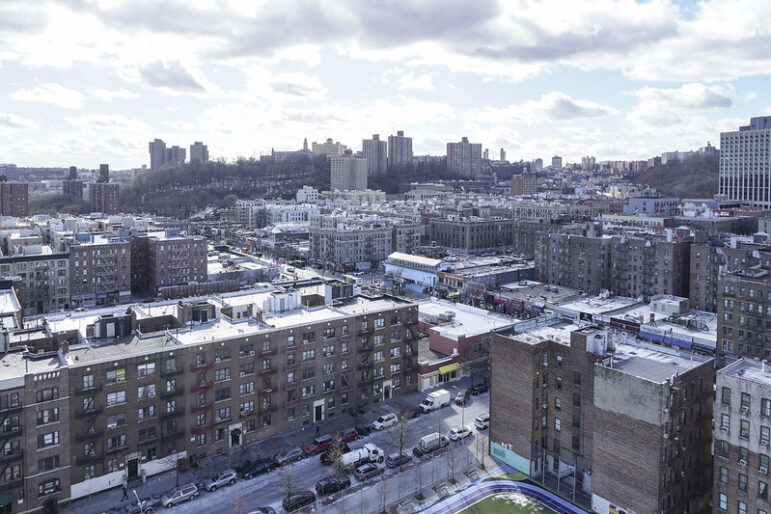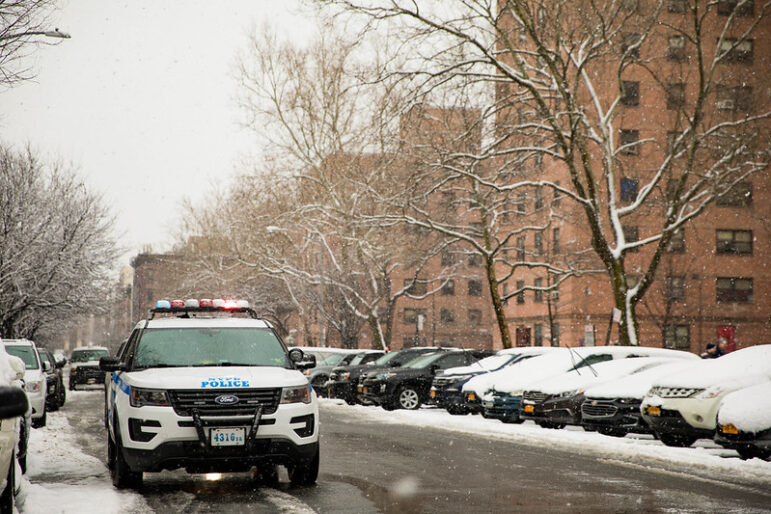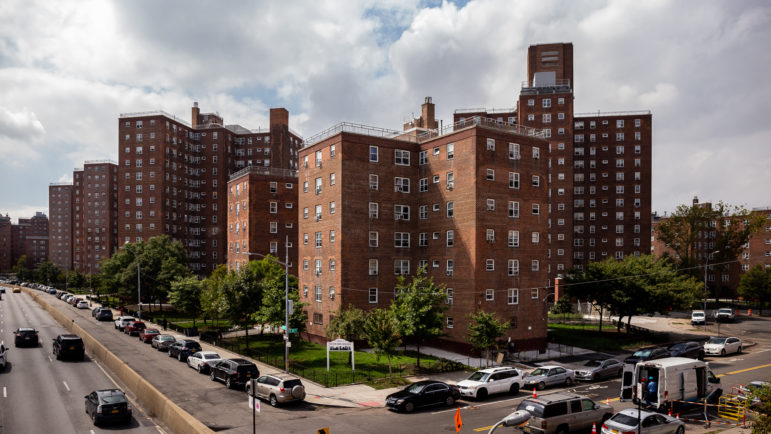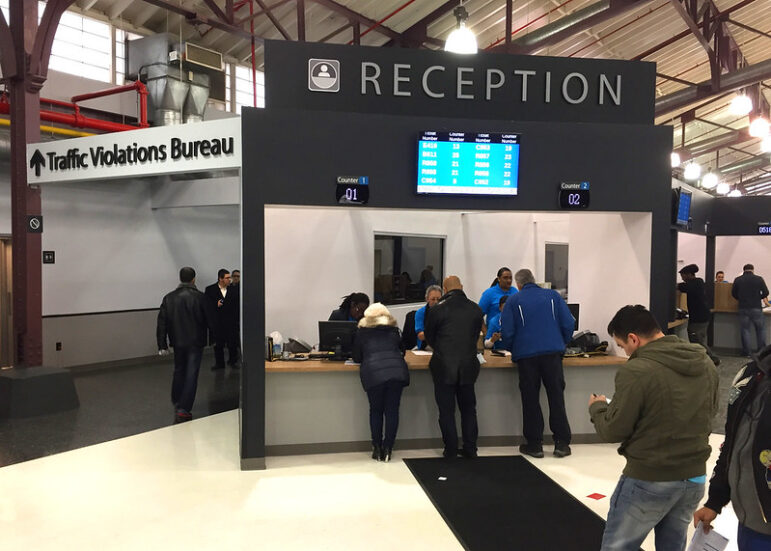The application, dubbed form 2010E, can take months to complete and requires prospective tenants to provide their medication and hospitalization history and show proof of homelessness, as well as a recent psychiatric evaluation.
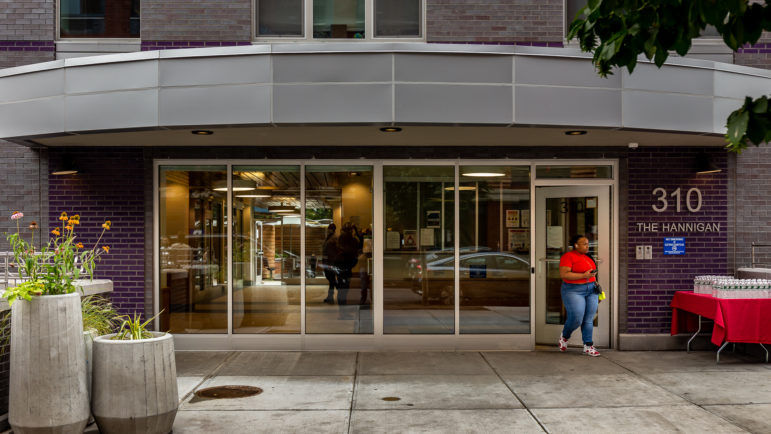
Adi Talwar
The exterior of The Hannigan, a supportive housing site in Harlem run by Center for Urban Community Services.A Brooklyn lawmaker is looking to simplify the city’s supportive housing application, saying it’s too complicated and time-consuming to complete—making it harder for homeless New Yorkers in need to access the units.
Supportive housing offers affordable apartments paired with health and social services, and are typically geared for people experiencing homelessness, mental health or substance use issues. There are tens of thousands of such apartments across the city, though landing one is tough—in part because of high demand and limited supply, but also because of an arduous application process, tenants and advocates say.
The application, dubbed form 2010E, can take months to complete and requires prospective tenants to provide their medication and hospitalization history and show proof of homelessness, as well as a recent psychiatric evaluation.
Supplying that kind of documentation can be especially difficult for street homeless New Yorkers, who may not have access to those records or may have lost personal items during sweeps of public encampments, when city workers sometimes throw their belongings away.
“Why is that something that someone who’s living on the street would need to chase down?” said Councilmember Sandy Nurse, who introduced a bill last week that aims to overhaul the application to reduce what she called “too much red tape.”
“Let’s get them inside, and then the service provider or the caseworker can help contact the hospitals and find out where this person may or may not have been,” Nurse said. “It just seems like we’re putting the burden of proving need [on] people who are very obviously in need.”
Nurse’s bill would require the city to conduct a three-month review of the 2010E form, consulting with supportive housing tenants and providers, and remove any parts of the application that aren’t required by state or federal laws, or by funding rules.
The goal is make it easier for those who need and are eligible for supportive housing to apply, as well as speed up the pace of placements in vacant units. During the first four months of the current fiscal year, from July to October, 94.4 percent of the city’s 36,673 supportive units were occupied, according to the latest Mayor’s Management Report, meaning just over 2,000 were not.
“We hope that this bill will make it possible for those who are most in need of supportive housing to gain quick access to apartments and services they need,” Kat Corbell, a supportive housing resident and member of the tenant-led advocacy group SHOUT, said in a statement.
Completing the 2010E form is just one part of the supportive housing application process. Once an application is approved, the applicant must be referred for and complete an interview, a step often rife with rejections, and which some advocates and tenants say can discriminate against those with the greatest needs.
During fiscal year 2024 that ended in June, 9,678 people were deemed eligible for supportive housing, meaning their application was approved. From there, 5,429 were referred for an interview, 3,826 actually completed an interview and 2,404 were approved for or moved into an apartment, data from the city’s most recent reporting shows.
During the first four months of the current fiscal year, from July to October, the median amount of time it took from when someone was determined eligible for supportive housing to when they moved into a unit was 129 days, according to the most recent Mayor’s Management Report.
That’s down from 140 days last fiscal year and 169 days three years ago. The report attributed the quicker pace to efforts by the Department of Social Services “to more efficiently identify and target units for occupancy,” including a focus on “hard to fill” units, and offering extra support for applicants during the referral and interview steps.
Pascale Leone, director of the Supportive Housing Network of New York, which represents hundreds of supportive housing providers across the state, said in a statement that it “supports a process to reduce the bureaucracy and re-traumatization inherent in the supportive housing application process.”
But Leone warned against “the use of federal requirements as the parameters in the application’s redesign, given the changing federal landscape.”
To reach the editor, contact Jeanmarie@citylimits.org
Want to republish this story? Find City Limits’ reprint policy here.


